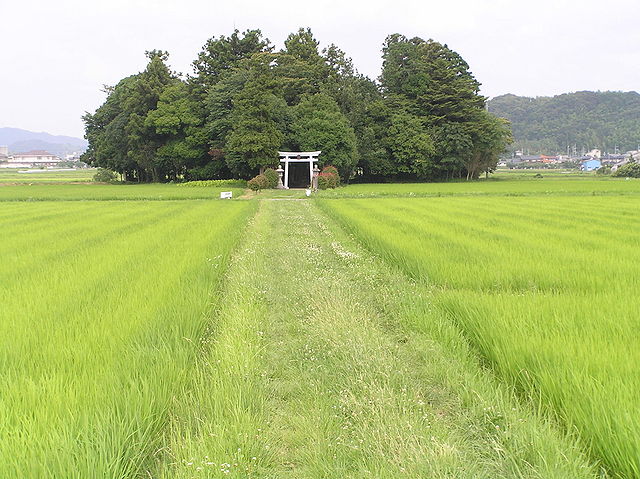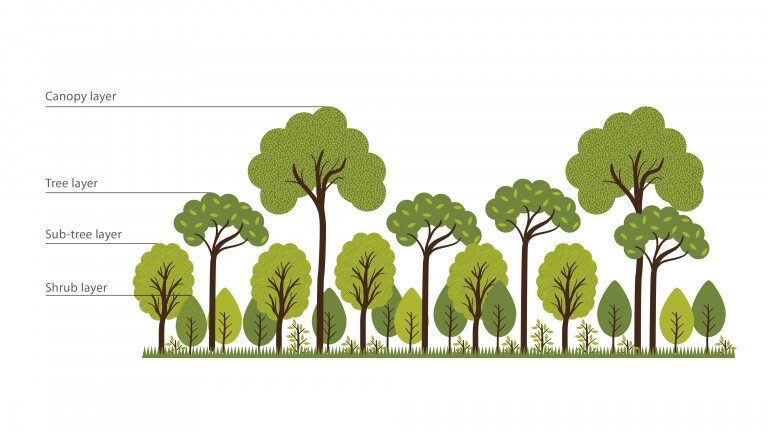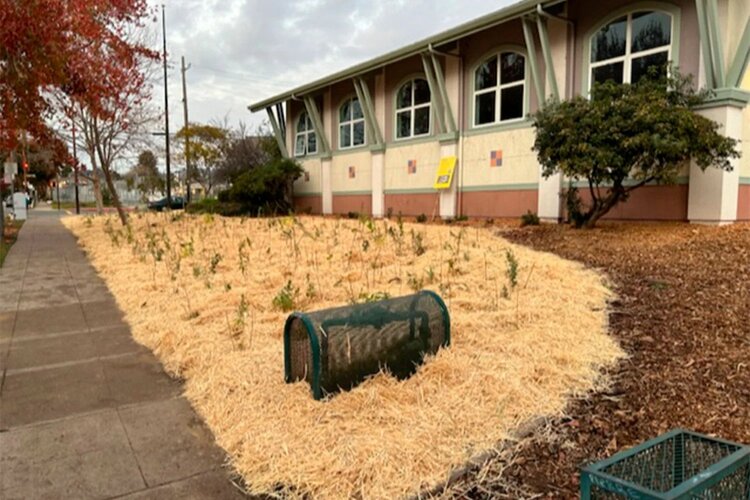 Picture yourself walking amongst towering trees and bushy shrubs. The forest that you might be imagining could be a rainforest or the redwoods of California.
Picture yourself walking amongst towering trees and bushy shrubs. The forest that you might be imagining could be a rainforest or the redwoods of California.
The forests that I’m thinking of, however, are called tiny forests. The area that the trees cover may not seem forest-sized because the average area is that of a basketball court!
For context, a basketball court is less than 0.2 acres, but a forest must measure at least 1.24 acres according to the UN’s Food and Agriculture Organization. That means a traditional forest is more than six times the size of a tiny forest! But what exactly are tiny forests, and what’s the importance? Let’s get into it!
Tiny Forests: History, Impact
The original inspiration for tiny forests came from Japanese botanist Akira Miyawaki.
 In the 1970s, Miyawaki observed that native trees clustered around Japanese holy places were thriving in comparison to transplanted greenery in deforested areas, and monoculture farms. Using this knowledge, he created a four-layer design for planting: the shrub layer, the sub-tree layer, the tree layer, and the canopy layer.
In the 1970s, Miyawaki observed that native trees clustered around Japanese holy places were thriving in comparison to transplanted greenery in deforested areas, and monoculture farms. Using this knowledge, he created a four-layer design for planting: the shrub layer, the sub-tree layer, the tree layer, and the canopy layer.
Miyawaki published his method in the “Plant Biotechnology” journal in 1999, but it was popularized in 2009 by a man named Shubhendu Sharma. Sharma was inspired by a project that Miyawaki completed outside of the Toyota factory in India where he worked.
Tiny forests offer all the conventional benefits of a forest: they lower air temperatures, absorb flood waters, cleanse the air, produce oxygen, and are natural weed suppressors. They have a growth rate that is 10 times the rate of traditional forests, trap 40X the amount of carbon, and are more biodiverse by 100 times! The increase in pollination leads to more native plant growth as well. Additionally, they are also virtually independent after three years.
Tiny Forests Are Growing!
 While the trend started in Japan, tiny forests are now found in Asia, Africa, South America, Europe, and the US - and they show no signs of slowing. Sharma founded a company, Afforestt, which has helped plant tiny forests in several places!
While the trend started in Japan, tiny forests are now found in Asia, Africa, South America, Europe, and the US - and they show no signs of slowing. Sharma founded a company, Afforestt, which has helped plant tiny forests in several places!
Though many tiny forests are planted in severely tree-deficient areas, they quickly provide noticeable differences in their surrounding environments. For instance, in Amman, Jordan, residents can feel a huge contrast between pre-forest temperatures and those after planting.
In the California Berkeley Unified School District, students have planted four tiny forests. The first three planted were the first schoolyard forests in the country. They are spread across four schools - Malcolm X, Cragmont, King, and Berkeley Technology Academy. In addition to all the wonderful effects the forests have on nature, they have also contributed to the mental development of young children. It has been proven that there are more positive social interactions and that bullying decreases when there are green areas available.
A New Beginning
With all the benefits that these tiny forests provide, it makes sense why so many communities are starting their own. Foreign governments are even aiding other countries to join this historic movement. One of the best things about the tiny forests is that we can plant our own tiny forests in our backyards!
Sources: NY Times, National Geographic, Berkeley Schools, Bloomberg, sugiproject.com, Mongabay







